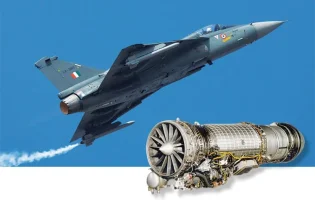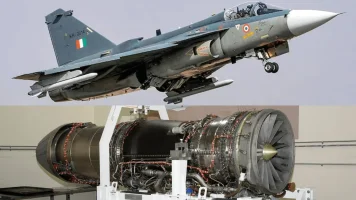- Views: 2K
- Replies: 2
The Indian Air Force (IAF) is bolstering its electronic warfare capabilities with the Tejas Mk1A light combat aircraft (LCA) and its advanced Scorpius-SP electronic warfare (EW) pod. This pod is designed to disrupt and neutralize enemy radar systems, posing a significant challenge to adversaries like China and Pakistan.
The Scorpius-SP utilizes cutting-edge technology, including directional jamming and anti-radiation missile protection, to counter various radar frequencies. Its Active Electronically Scanned Array (AESA) radar jammer allows for real-time adaptation to enemy emissions, effectively countering modern AESA radars employed by advanced fighter jets and surface-to-air missile systems.
Countering China-Pakistan Fighter Jet Radars
- JF-17 (Pakistan): While equipped with the KLJ-7 AESA radar, the JF-17's radar technology is considered less sophisticated than its Chinese counterparts. The Scorpius-SP's jamming capabilities could prove highly effective against this system.
- J-10C (China): This fourth-generation fighter boasts a more advanced AESA radar. The Scorpius-SP's directional jamming could disrupt its tracking capabilities, but success depends on the specific frequencies and techniques employed.
- J-20 (China): As a fifth-generation stealth fighter, the J-20 features a cutting-edge AESA radar with low observability and long-range detection. However, its reliance on AESA technology makes it potentially vulnerable to the Scorpius-SP's frequency hopping and jamming capabilities.
- J-16 (China): This multi-role fighter utilizes an X-band AESA radar. The Scorpius-SP could exploit potential limitations in its electronic warfare countermeasures, particularly if the radar isn't specifically designed to counter the pod's jamming signals.
Neutralizing Missile Systems
The Scorpius-SP also holds the potential to disrupt surface-to-air missile systems like the Chinese HQ-9B and the Russian-made S-400, both of which rely on sophisticated AESA radars for targeting.- HQ-9B (China): The pod's active jamming could interfere with the HQ-9B's fire control radar, hindering its ability to lock onto targets. Effectiveness would depend on factors like altitude, distance, and operational conditions.
- S-400 (Russian Missile Defence System Possessed By China): While the S-400 boasts advanced radar technology, the Scorpius-SP's jamming capabilities could potentially disrupt its tracking and guidance systems, though this would likely be a complex electronic warfare engagement.
Factors Affecting Effectiveness
It's crucial to note that the Scorpius-SP's success in countering these threats depends on several factors:- Enemy Countermeasures: The sophistication of enemy electronic counter-countermeasures (ECCM) will play a crucial role in determining the pod's overall effectiveness.
- Operational Range: The range at which the Scorpius-SP can effectively jam enemy systems is a critical factor in real-world scenarios.
- Battlefield Tactics: The specific tactics employed by both sides, including the use of electronic deception and support jamming, will influence the outcome of electronic warfare engagements.



